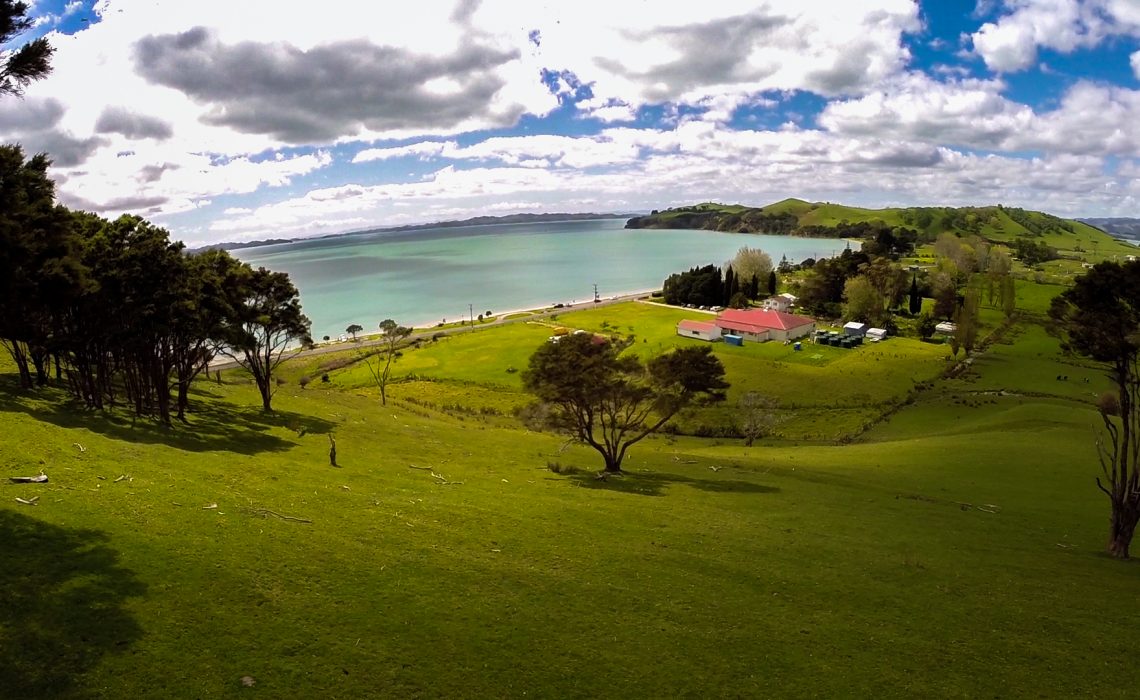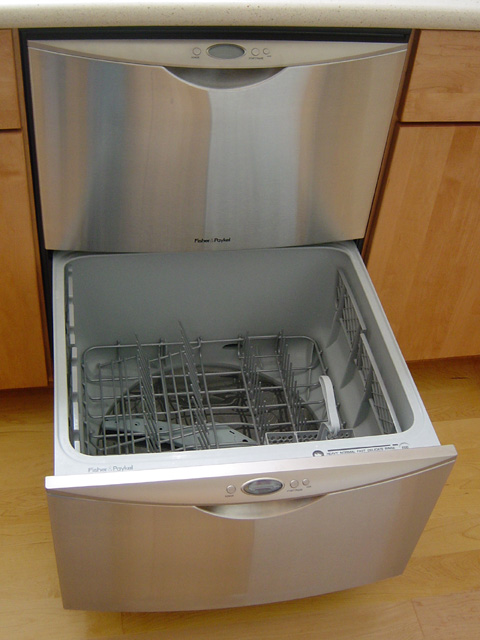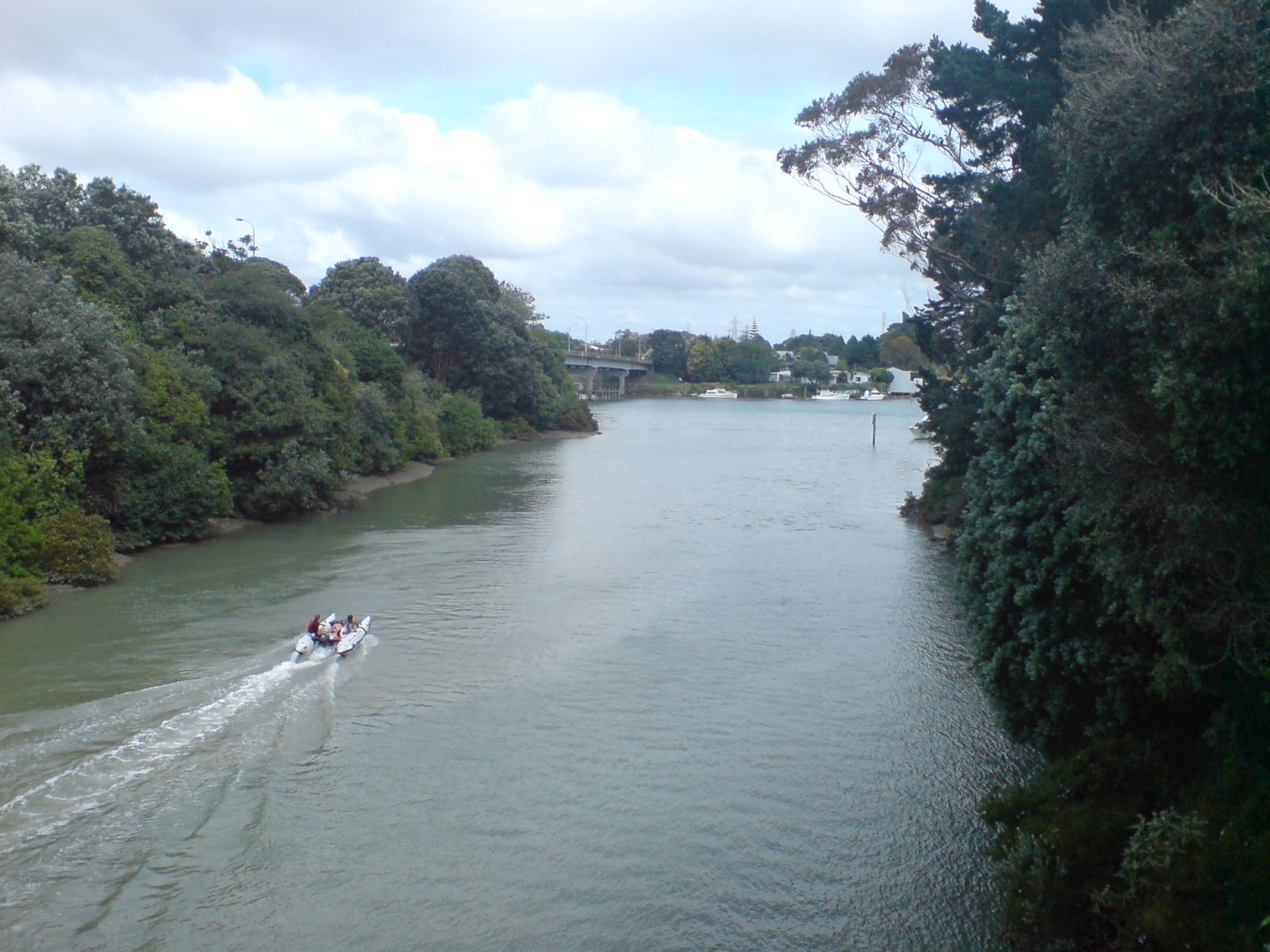|
Highbrook
Highbrook is a suburb located in the city of Auckland, in the North Island of New Zealand. The area is on the eastern side of the Auckland city centre and is a large industrial area developed only in recent years. The area is under governance of the Auckland Council, and is home to a large bulk of New Zealand and international businesses and organisations. History The eastern shores of the Tāmaki River is part of the rohe of Ngāi Tai ki Tāmaki, who descend from the crew of the '' Tainui'' migratory waka, who visited the area around the year 1300. The mouth of the Tāmaki River was traditionally known as ("The Waters of Tāiki"), named after the Ngāi Tai ancestor Tāiki. Tāiki settled with his followers along the eastern shores of the Tāmaki River, alongside the descendants of Huiārangi of the early iwi Te Tini ō Maruiwi. The upper reaches of the river near modern Pakuranga is traditionally known as , referring to Mokoikahikuwaru, a protector taniwha of the ''Tainu ... [...More Info...] [...Related Items...] OR: [Wikipedia] [Google] [Baidu] |
Ōtara
Ōtara is a suburb of South Auckland, New Zealand (formerly Manukau City), situated 18 kilometres to the southeast of the Auckland CBD. Ōtara lies near the head of the Tamaki River (actually an arm of the Hauraki Gulf), which extends south towards the Manukau Harbour. Contemporary Ōtara is surrounded by the suburbs of Papatoetoe, East Tāmaki, Clover Park and Flat Bush. The suburb is noted for its proportion of Pacific Islander residents, who make up 78% of the Ōtara population, and its unusually low number of European New Zealanders (Pākehā) residents (10%). History Māori origins In the Māori language, ''Ō-Tara'' means ‘the place of Tara’ or ‘territory belonging to Tara’, who was a rangatira (Māori chief) of the area. 'Ōtara' is in turn the shortened form of Te Puke o Tara (literally; ‘The Hill of Tara’); known also for a time as Smales Mount. Te Puke o Tara was one of Ōtara's prominent volcanic cones, and prior to European settlement in the area wa ... [...More Info...] [...Related Items...] OR: [Wikipedia] [Google] [Baidu] |
Pakuranga
Pakuranga is an eastern suburb of Auckland, in northern New Zealand. Pakuranga covers a series of low ridges and previously swampy flats, now drained, that lie between the Pakuranga Creek and Tamaki River, two estuarial arms of the Hauraki Gulf. It is located to the north of Manukau and 15 kilometres southeast of the Auckland CBD. History The suburb's name comes from the Māori , meaning ''battle of the sunlight'' or ''battle of the sun's rays''. The name refers to a fierce battle at Ōhuiarangi / Pigeon Mountain over forbidden love raged between two - fairy people of the forest - until a priest caused the sun to rise and the earth to explode. Caught by the rays of the sun and volcanic eruptions, many patupaiarehe perished. Pakuranga is traditionally home to the Ngāi Tai Iwi also known as Ngāi Tai ki Tāmaki. The prominent pā were at Ohuiarangi / Pigeon Mountain and Mokoia Pā of Ngāti Paoa at Panmure on a cliff, at the intersection of the Te Wai Ō Taiki / Tamaki Riv ... [...More Info...] [...Related Items...] OR: [Wikipedia] [Google] [Baidu] |
Ngāi Tai Ki Tāmaki
Ngāi Tai ki Tāmaki is a Māori tribe that is based in the area around Clevedon, part of the Auckland region (''Tāmaki'' in the Māori language). It is one of the twelve members of the Hauraki Collective of tribes. The founding ancestors of Ngāi Tai ki Tāmaki came to New Zealand in the ''Tainui'' migration canoe and left it when it was dragged across Te Tō Waka, the portage from the Tāmaki River to the Manukau Harbour. Their descendants occupied parts of the Hauraki Gulf, including east Auckland as far inland as Otara and Maungarei, as well as Clevedon, Maraetai and Howick. Te Irirangi Drive, a major highway in Manukau City, is named after one of their ''rangatira'' (chiefs), Tara Te Irirangi. Ngāi Tai has a marae at Umupuia Beach, between Maraetai and Clevedon. They also use the Ngāti Tamaoho marae at Karaka. In 2015 the Crown settled with Ngāi Tai ki Tāmaki over historic grievances, including both financial and cultural compensation. See also *List of iwi ... [...More Info...] [...Related Items...] OR: [Wikipedia] [Google] [Baidu] |
Howick Local Board Area
Howick may refer to: Places *Howick, KwaZulu-Natal, in South Africa **Howick Falls * Howick, Lancashire, a small hamlet (Howick Cross) and former civil parish in England *Howick, New Zealand **Howick Historical Village ** Howick (New Zealand electorate), a former parliamentary electorate, 1993–1996 **Howick ward, electoral district of Auckland Council *Howick, Northumberland, a village in England **Howick Hall, a stately home **Howick house, a Mesolithic site *Howick, Ontario, Canada * Howick, Quebec, Canada * Howick, Western Australia, in the Shire of Esperance, Australia *Howick Group National Park * Howick Island, Australia People *Baron Howick of Glendale *Baron Grey of Howick and Viscount Howick (in Northumberland), subsidiary titles of Earl Grey *Jeremy Howick Other uses * USS ''Howick Hall'' (ID-1303), a United States Navy ship See also * Hawick Hawick ( ; sco, Haaick; gd, Hamhaig) is a town in the Scottish Borders council area and historic county of Roxburghs ... [...More Info...] [...Related Items...] OR: [Wikipedia] [Google] [Baidu] |
Suburbs Of Auckland
This is a list of suburbs in the Auckland metropolitan area, New Zealand, surrounding the Auckland Central Business District. They are broadly grouped into the local government areas that existed from 1989 to 2010. Auckland central This area is the former Auckland City. * Arch Hill *Auckland CBD * Avondale *Blockhouse Bay * Balmoral *Blackpool *Eden Terrace * Eden Valley * Ellerslie *Epsom *Freemans Bay *Glendowie * Glen Innes * Grafton *Greenlane * Greenwoods Corner *Grey Lynn *Herne Bay * Hillsborough * Kingsland *Kohimarama * Lynfield * Meadowbank * Mission Bay * Morningside * Mount Albert *Mount Eden *Mount Roskill * Mount Wellington * Newmarket *Newton * New Windsor *Onehunga * Oneroa * Onetangi *One Tree Hill *Ōrākei *Oranga *Ostend *Ōtāhuhu *Owairaka * Palm Beach * Panmure * Parnell * Penrose *Point England *Point Chevalier * Ponsonby *Remuera *Royal Oak *Saint Heliers * St Johns * Saint Marys Bay *Sandringham *Stonefields * Surfdale *Tāmaki *Te Papapa *Three Ki ... [...More Info...] [...Related Items...] OR: [Wikipedia] [Google] [Baidu] |
Fisher & Paykel
Fisher & Paykel Appliances Holdings Ltd () is a major appliance manufacturer which is a subsidiary of Chinese multinational home appliance manufacturer Haier. It is a multinational corporation based in East Tāmaki, New Zealand. Originally an importer of domestic refrigerators, Fisher & Paykel now holds over 420 patents and bases its identity on innovative design, particularly in the areas of usability and environmental awareness. The company's trademarked appliances include Active Smart refrigerators, AeroTech ovens, DishDrawer dishwashers, Smart Drive washing machines and Smartload top loading dryers. The company also manufactures gas and electric cooktops. In 2004, Fisher & Paykel Appliances purchased the United States-based cookware manufacturer Dynamic Cooking Systems, and Italian cookware company Elba in 2006. Fisher & Paykel had grown into a global company operating in 50 countries and manufacturing in Thailand, China, Italy and Mexico. The company had a manufactur ... [...More Info...] [...Related Items...] OR: [Wikipedia] [Google] [Baidu] |
Woolf Fisher
Sir Woolf Fisher (20 May 1912 – 12 January 1975) was a New Zealand businessman and philanthropist who along with Maurice Paykel co-founded Fisher & Paykel, a major appliance manufacturing company, and the Ra Ora Stud, an important Thoroughbred racehorse breeding operation. Biography Born in Wellington, his family moved to Auckland where he studied at Mount Albert Grammar School. Woolf is the oldest brother of renowned fashion entrepreneur and philanthropist, Gus Fisher. A salesman turned businessman, Fisher was involved in a number of successful New Zealand enterprises. He served as the first chairman of New Zealand Steel. In 1960, he established the Woolf Fisher Trust to provide funding that maintained the salaries of post-primary schoolteachers and principals while sending them overseas to further their education. Fisher also supported the Outward Bound Trust of New Zealand and in 1961 became its first president. In the 1964 New Year Honours, Fisher was appointed a Knigh ... [...More Info...] [...Related Items...] OR: [Wikipedia] [Google] [Baidu] |
Panmure Basin
The Panmure Basin (traditionally known in Māori as Kaiahiku or Te Kopua Kai-a-Hiku), also sometimes known as the Panmure Lagoon, is a tidal estuary within a volcanic crater or maar in New Zealand's Auckland volcanic field. It is located to the south of Panmure town centre. Geology The volcano erupted approximately 25,200 years ago. During the Last Glacial Maximum, the basin was a freshwater lake. When sea-levels rose, the estuarine waters of the Tāmaki River breached the lake, turning it into a tidal estuary. A small scoria cone is found in the centre of the basin, obscured by layers of mud. History The traditional name of the basin was Te Kai a Hiku. It features in traditional Tāmaki Māori stories as the eating place of the taniwha Moko-ika-hiku-waru. The headland between the basin and the Tāmaki River was the location of the Ngāti Pāoa pā Mauināina (also known as Maunga-inaina and Taumata-inaina). In February 2008, scientists announced that drilling had discove ... [...More Info...] [...Related Items...] OR: [Wikipedia] [Google] [Baidu] |
Taniwha
In Māori mythology, taniwha () are large supernatural beings that live in deep pools in rivers, dark caves, or in the sea, especially in places with dangerous currents or deceptive breakers (giant waves). They may be considered highly respected kaitiaki (protective guardians) of people and places, or in some traditions as dangerous, predatory beings, which for example would kidnap women to have as wives. Etymology and Pacific analogues Linguists have reconstructed the word ''taniwha'' to Proto-Oceanic *''tanifa'', with the meaning "shark species". In Tongan and Niuean, ''tenifa'' refers to a large dangerous shark, as does the Samoan ''tanifa''; the Tokelauan ''tanifa'' is a sea-monster that eats people. In most other Polynesian languages, the cognate words refer to sharks or simply fish. Some anthropologists have stated that the taniwha has "analogues that appear within other Polynesian cosmologies".A. Asbjørn Jøn,The Road and the Taniwha in ''Australian Folklore: A Yearly ... [...More Info...] [...Related Items...] OR: [Wikipedia] [Google] [Baidu] |
Tainui (canoe)
In Māori tradition, ''Tainui'' was one of the great ocean-going canoes in which Polynesians migrated to New Zealand approximately 800 years ago. In Māori tradition, the ''Tainui'' waka was commanded by the chief Hoturoa, who had decided to leave Hawaiki because over-population had led to famine and warfare. The crew of the ''Tainui'' were the ancestors of the iwi that form the Tainui confederation. Crafting The Tainui waka (canoe) was made from a great tree, at a place in Hawaiki known then as Maungaroa, on the spot where a stillborn child had been buried. According to Te Tāhuna Herangi the waka was named after the child who had been called Tainui. The canoe was made by Rakatāura, an expert boat builder in the tradition of Rātā, or according to Wirihana Aoterangi by Rātā himself. It was built with three adzes (''toki''): ''Hahau-te-pō'' ('Chop the night-world') to chop down the tree, ''Paopao-te-rangi'' ('Shatter the heavens') to split the wood, and ''Manu-tawhi ... [...More Info...] [...Related Items...] OR: [Wikipedia] [Google] [Baidu] |
Tāmaki River
The Tāmaki River or Tāmaki Estuary is mostly an estuarial arm and harbour of the Hauraki Gulf, within the city of Auckland in New Zealand.Eastern suburbs: Ōrākei to the Tamaki River (from Te Ara: The Encyclopedia of New Zealand. Accessed 2008-06-07.) It extends south for from its mouth between the suburb of and the long thin peninsula of , which reaches its end at |
Rohe
The Māori people of New Zealand use the word ''rohe'' to describe the territory or boundaries of ''iwi'' (tribes), although some divide their rohe into several ''takiwā''. The areas shown on the map (right) are indicative only, and some iwi areas may overlap. The term ''rohe'' also combines with other words to form more modern terms. These include ''rohe pōti'', meaning an electoral district or constituency, ''rohe wā'', meaning time zone, and ''whatunga rohe paetata'', meaning a local area network. The term ''rohe'' on its own has also been adopted to mean an internet domain. The term is also used for the mission districts (''rohe mihana'') of Te Pīhopatanga o Aotearoa, the Māori Anglican Church in Aotearoa/New Zealand. See also * List of Māori iwi This is a list of iwi (New Zealand Māori tribes). List of iwi This list includes groups recognised as iwi (tribes) in certain contexts. Many are also hapū (sub-tribes) of larger iwi. Moriori are included on this list. ... [...More Info...] [...Related Items...] OR: [Wikipedia] [Google] [Baidu] |





